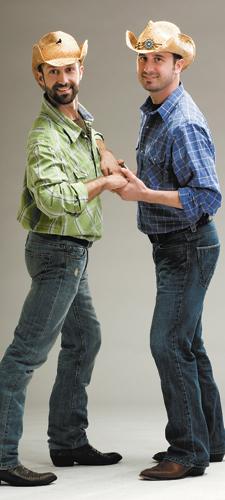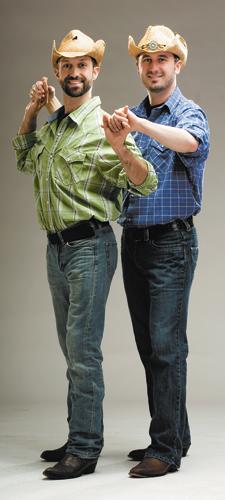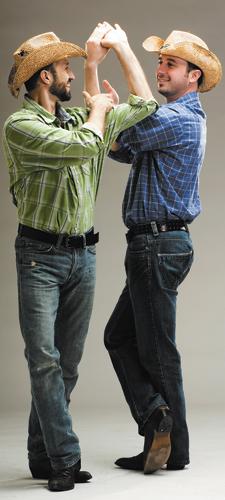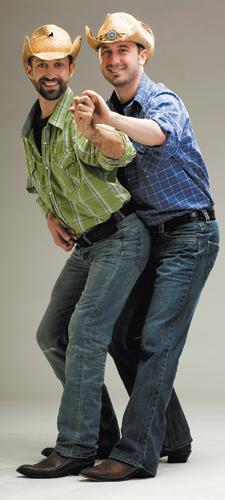
Credit: Shimon Karmel

Credit: Shimon Karmel

Credit: Shimon Karmel
Let’s not kid ourselves: hoedowns are awesome.
Trouble is, most country-western hootenannies take place outside the city, where male-female couples still dominate the dancefloor.
Some may see country-western two-step as an antiquated style of dance best left to traditional husband-wife duos, but in the basement of St Paul’s Anglican Church in Vancouver’s West End, a soft revolution is taking place.
Every Thursday night since October 2009, members of the Timberline Dance Society have been gathering to socialize and polish their moves.
Vancouver’s first queer country-western dance club owes its inception to landscaper Marek Kociolek’s trip to the Sundance Saloon in San Fran. The gay country group he found there inspired him to start a similar organization on home turf, which has been enthusiastically embraced by queer dancers of all stripes. Members recently took part in Seattle’s Emerald City Hoedown.
Xtra caught up with the two-steppers upon their return home, to learn a few choice moves. Giddy up.
SHADOW DANCE
Not safe for church! If ever there was a two-step answer to grinding on the dancefloor on a Saturday night, this is it, cowpokes.
“Dance shouldn’t be limited to being straight. Dance should be available to everybody, because it’s a freedom of expression and a joy of being alive,” Kociolek says.
“It’s important to be able to communicate through movement and through touch, and to establish community, and to be able to talk and laugh face-to-face.”
THE BASIC FRAME
Timberline dancers Roger Tomas (left) and Matt St Germain (right) demonstrate the start position for most country-western dance steps.
New to Vancouver from Montreal, Tomas was eager to continue dancing in a gay country-western group, and Timberline was the perfect fit. “It’s a nice place to meet people. And it’s really dynamic,” he says. “Every Thursday, I go there and I have a lot of fun.”
OPEN FRAME
A common transition step from one position to the next. There are hundreds of dance steps in the two-step lexicon, and the open frame is often used as a bridge between steps.
A beginner when he joined the club last fall, St Germain was initially intimidated by the scope of what he was about to learn.
“The first day was quite challenging, just learning the steps,” he recalls. “But I’ve stuck with it ever since.”
THE PROMENADE
One of the most important foundational steps in two-step, in which dancers transition from one position to the next or move across the floor.
“The main responsibility for the lead is to make sure that the follow looks fabulous,” Kociolek says.
“You get a couple of good laughs,” he says. “You laugh at yourselves, and there’s no such thing as road rage on the dancefloor, which is a cool thing.”
Unlike square dancing, where dancers move in unison to steps announced by a caller, two-step is less structured. “It’s freestyle. It’s like a big mélange of dance mayhem,” Kociolek says.
“This is a much more personal form of dance than going to a club and having drinks and just going crazy on the dancefloor,” he adds.
THE WINDOW
The dancers’ arms lock to form a square.
“The thing that’s really nice about country dance is that it’s inclusive of men and women,” Kociolek says. “It’s not like the men are on one side of the room and they don’t dance together. Ladies are free to dance together, and guys are free to dance together. There’s no real divisiveness.”
Xtra videographer Angelina Cantada recently caught up with the Timberline Dance Society at one of their Thursday night practises. She spoke with participant Kori Doty and dance instructor Michel Guimond. Watch the clip below:

 Why you can trust Xtra
Why you can trust Xtra


